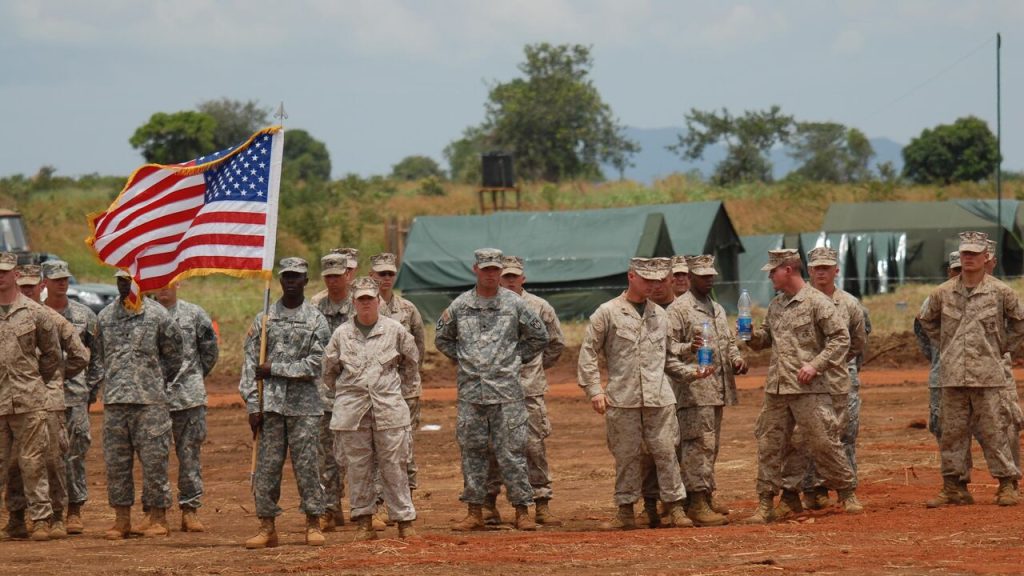The United States (U.S.) has maintained a strategic interest in African countries for decades, driven by humanitarian concerns, counterterrorism, geopolitical competition, and the protection of American citizens abroad.
While the term “military involvement” often evokes images of large-scale invasions, U.S. activities on the continent have more commonly taken the form of humanitarian missions, peacekeeping support, counterterrorism operations, medical aid, and emergency response.
This article provides a full overview of African countries where the U.S. has deployed military personnel or resources, and why.
1. Somalia (1992–1994)
Nature of involvement: Humanitarian + Peace enforcement
In response to a devastating civil war and widespread famine, the U.S. deployed troops to Somalia under Operation Restore Hope in 1992, later transitioning into a broader UN mission. While initially focused on facilitating aid delivery, the conflict between armed factions escalated, forcing U.S. forces into combat engagements, including the infamous Battle of Mogadishu in 1993.
The mission ended in 1994, becoming one of the most significant U.S. military operations in Africa.
Why the U.S. intervened:
- Prevent mass famine
- Protect aid workers
- Stabilize warring regions
2. Liberia (2014–2015)
Nature of involvement: Humanitarian assistance
During the peak of the Ebola epidemic in West Africa, the U.S. deployed troops and logistical support to Liberia to help contain the outbreak. The mission included constructing treatment facilities, transporting supplies, and training healthcare workers.
Why the U.S. intervened:
- Support overwhelmed health systems
- Prevent regional spread of Ebola
- Aid international emergency response
3. Senegal (2014–2015)
Nature of involvement: Humanitarian assistance
Senegal served as a strategic staging ground during the Ebola crisis. U.S. forces provided logistical and medical support to help coordinate regional response efforts. The assistance helped prevent the outbreak from overwhelming weak public health systems beyond Liberia and Sierra Leone.
Why the U.S. intervened:
- Support regional Ebola response
- Strengthen medical infrastructure
4. Kenya (1998)
Nature of involvement: Disaster relief
After a coordinated terrorist bombing struck the U.S. Embassy in Nairobi, hundreds were killed and thousands injured. U.S. forces mobilized to provide medical care, rescue services, and logistical support. The operation was largely humanitarian, focused on recovery and investigation.
Why the U.S. intervened:
- Respond to U.S. embassy bombing
- Provide medical and rescue support
- Conduct recovery and security operations
5. Tanzania (1998)
Nature of involvement: Disaster relief
The same attack that hit Kenya targeted the U.S. Embassy in Dar es Salaam. As in Nairobi, the U.S. military deployed to treat victims, assist in disaster recovery, and investigate the terror attack.
Why the U.S. intervened:
- Respond to U.S. embassy bombing
- Support rescue and medical operations
- Assist in counterterror investigations
6. West Africa (Regional) — 2014–2015
Nature of involvement: Humanitarian (health crisis response)
Beyond Liberia and Senegal, U.S. military involvement extended to other parts of West Africa during the Ebola outbreak. This support included logistics, airlift operations, and technical medical aid across several countries.
Why the U.S. intervened:
- Prevent spread of Ebola across the region
- Bolster regional healthcare capacity
The post Full list of African countries that’ve experienced U.S. involvement — and why appeared first on Vanguard News.

